Buckwheat Bread – Gluten Free
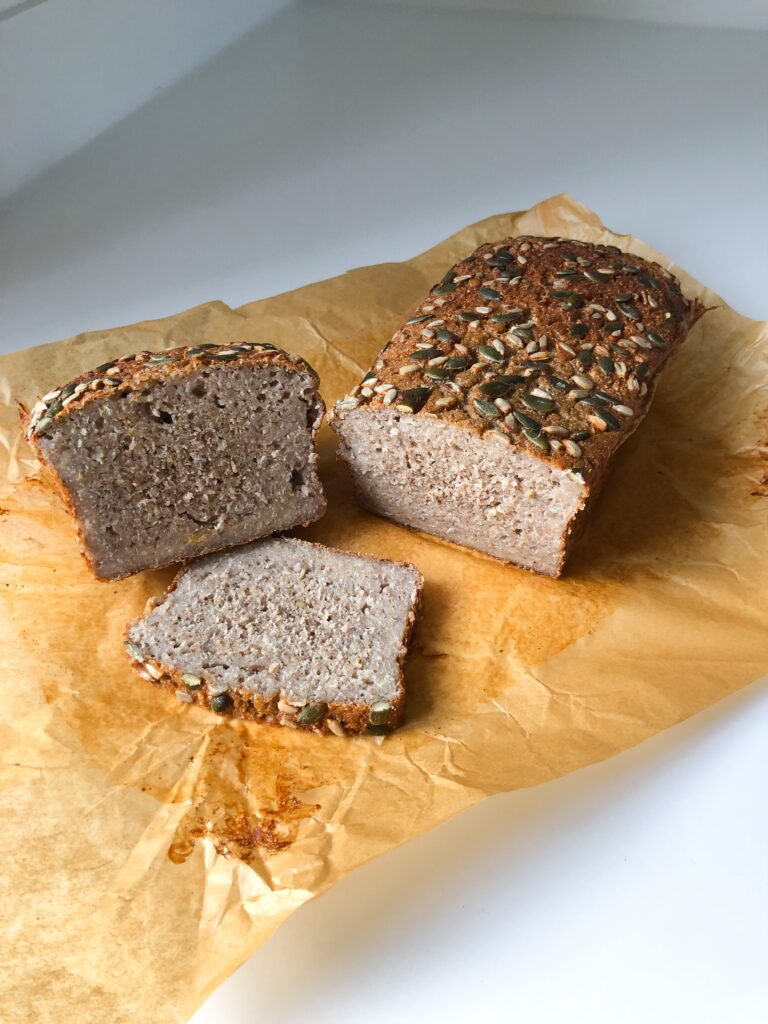
This Buckwheat Bread is so easy to do. It has just one ingredient, water and some love. It’s gluten free, yeast free and oil free. No need to knead, just a bit of planning ahead as it needs to soak and ferment. This Bread is hearty, nutty, a bit tangy from the natural fermentation and so wholesome that you will be baking it every week. This Bread is an adaptation from a recipe shared by my very good friend Catarina and as a chain of love I’m passing it to you. Sharing is caring.
- Prep 10 mins
- Cook 55-60 mins
- Soaking and Fermentation 32 hours | Makes 1 loaf
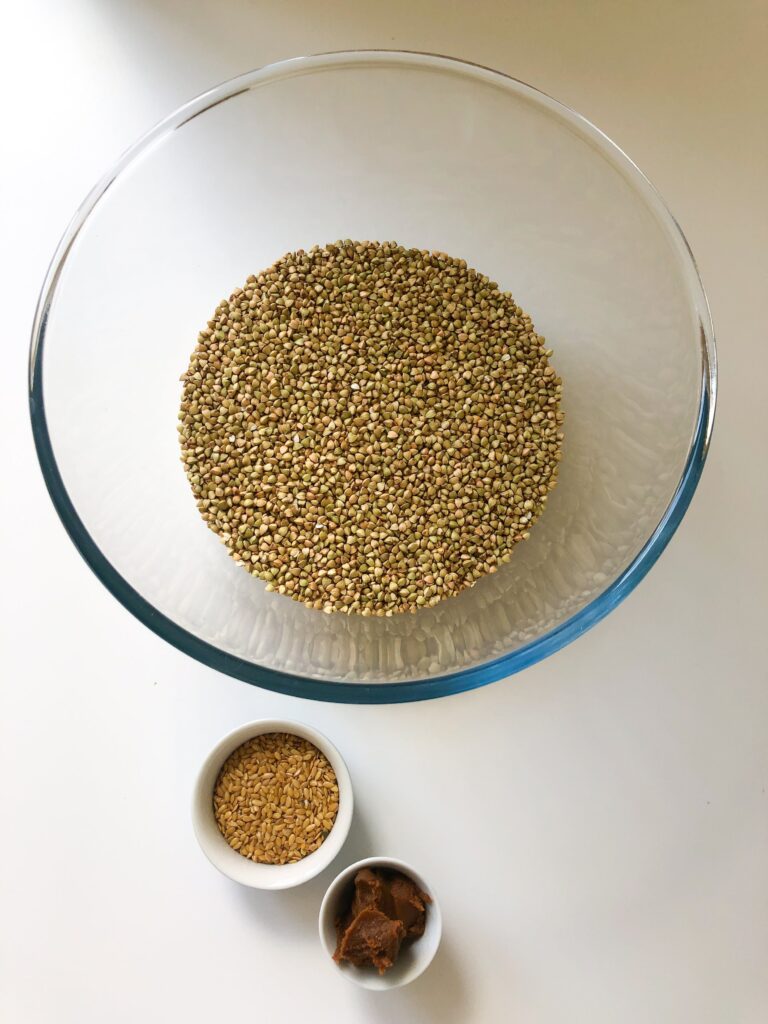
Ingredients:
500 gr of organic Buckwheat Groats Raw
500 ml of filtered or mineral water
Extras optional:
1 Tbsp of Golden Linseeds
1 Tbsp of Miso Paste
Instructions
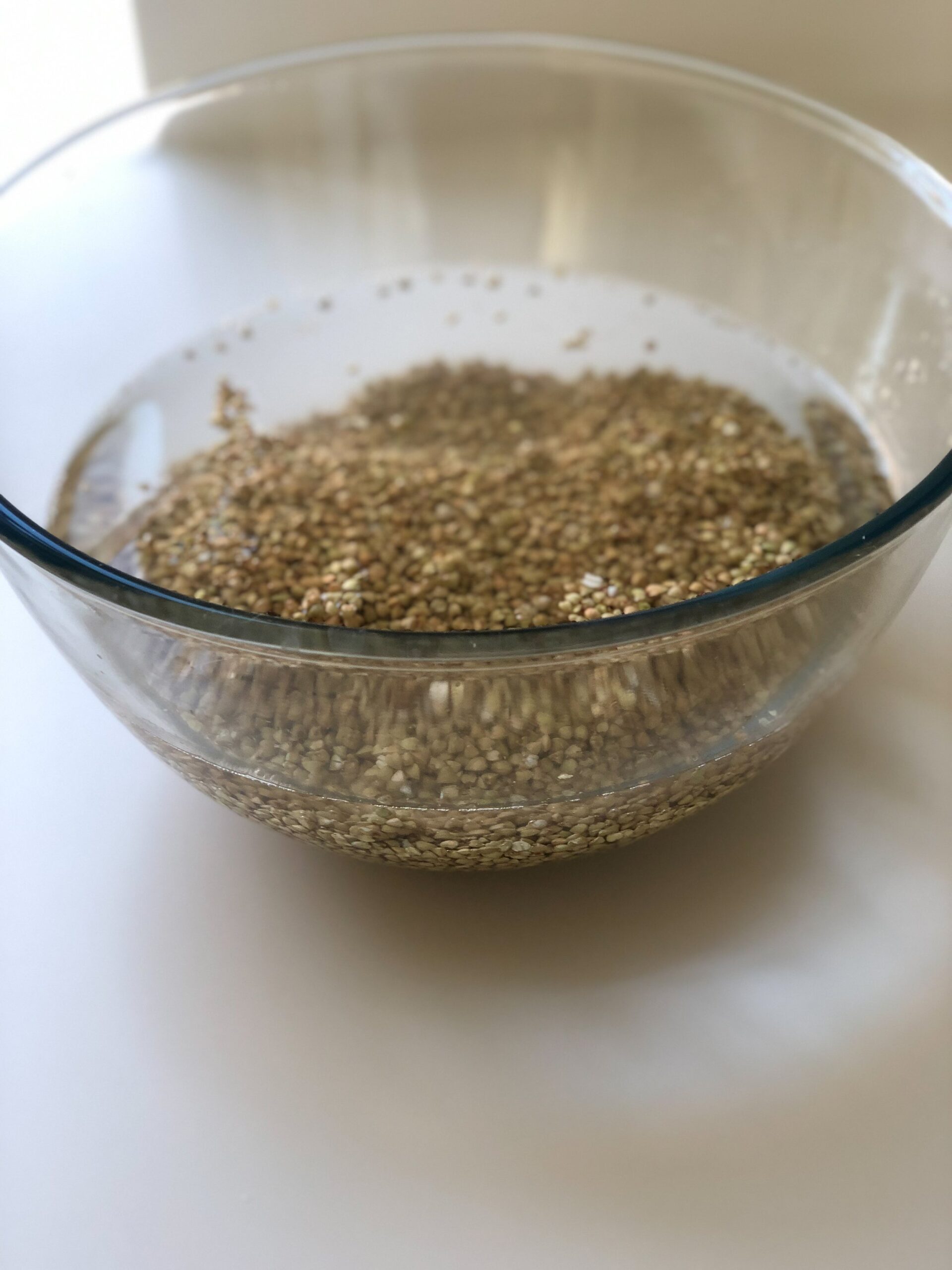
Step 1 – Start by rinsing the grouts in plenty of water until it comes out clean, normally 3 changes of water. Soak the Buckwheat Grouts overnight or 8 hours with clean filtered water at room temperature.

Step 2 – Discard the soaking water, rinse and add the 500 ml of filtered or mineral water. Blend together with an immersion blender or add it to a food processor until you reach a homogenic batter. Cover the glass bowl and let it ferment for 12-24 hours at room temperature in a warm cosy place.

Step 3 – You know is ready when it forms air bubbles. In the summer will ferment faster, in the winter it needs some help. Keep it next to a heater or inside the oven.
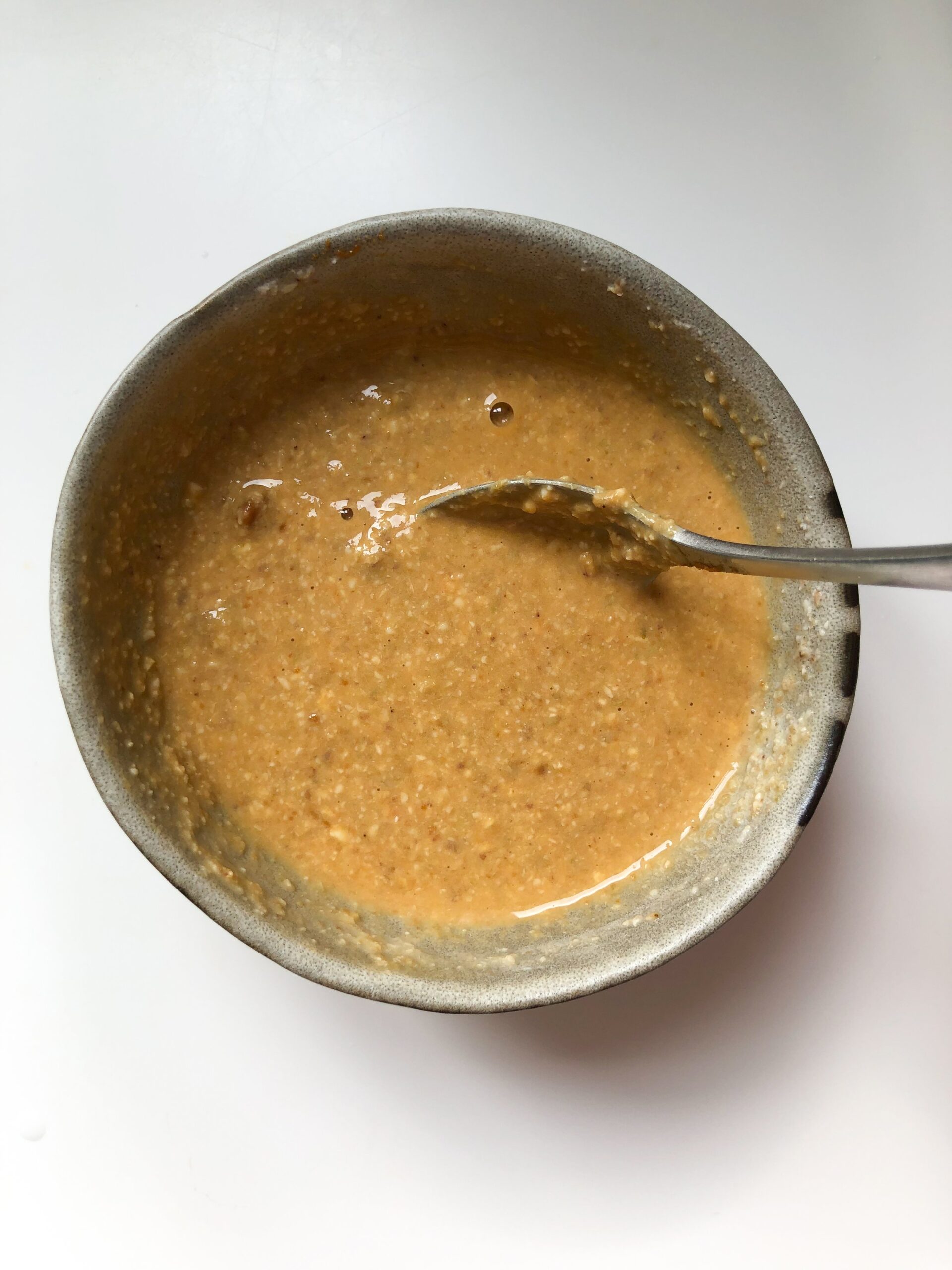
Step 4 – Pre-heat the oven at 180C fan. Take 2-3 Tbsp of the batter and mix it with the miso paste in a separate bowl. Make sure it is all blended in and smooth.
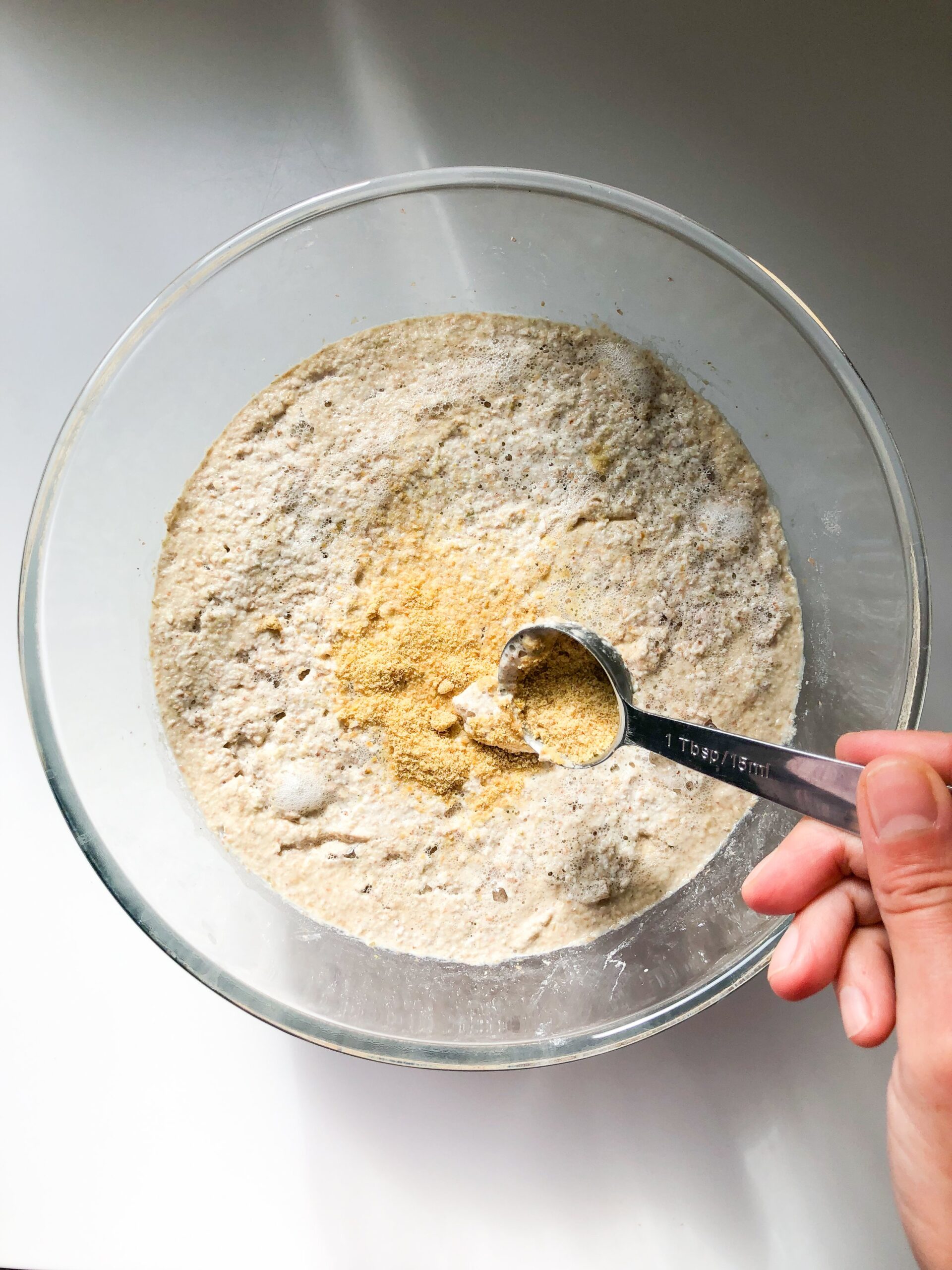
Step 5 – Add the ground Linseeds and the dissolved Miso Paste in to the batter folding carefully.
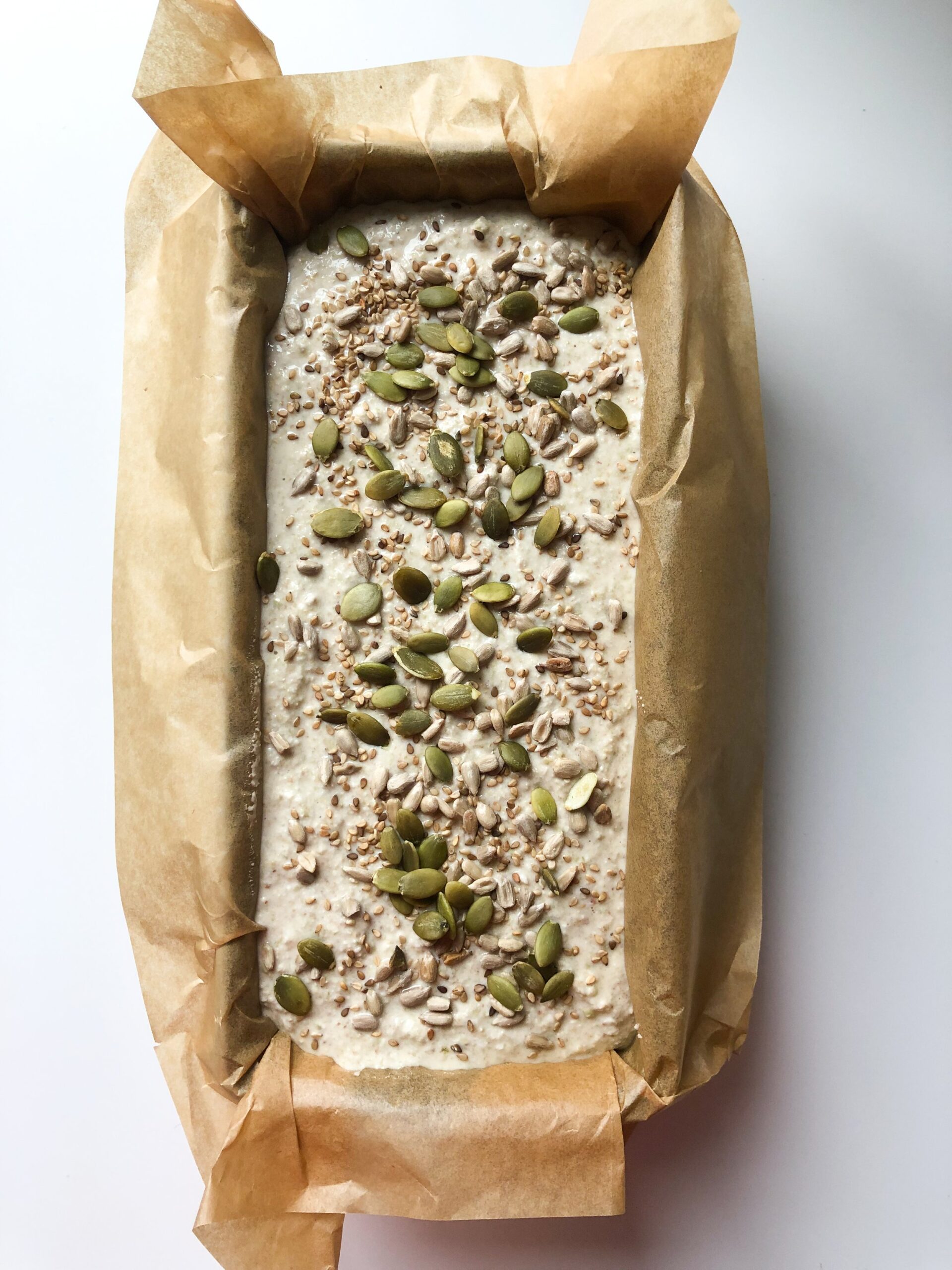
Step 6 – Pour the batter in a loaf pan lined with parchment paper. I’m adding Pumpkin, Sunflower and Sesame seeds on top. You can add whatever seeds you like or leave it bare.
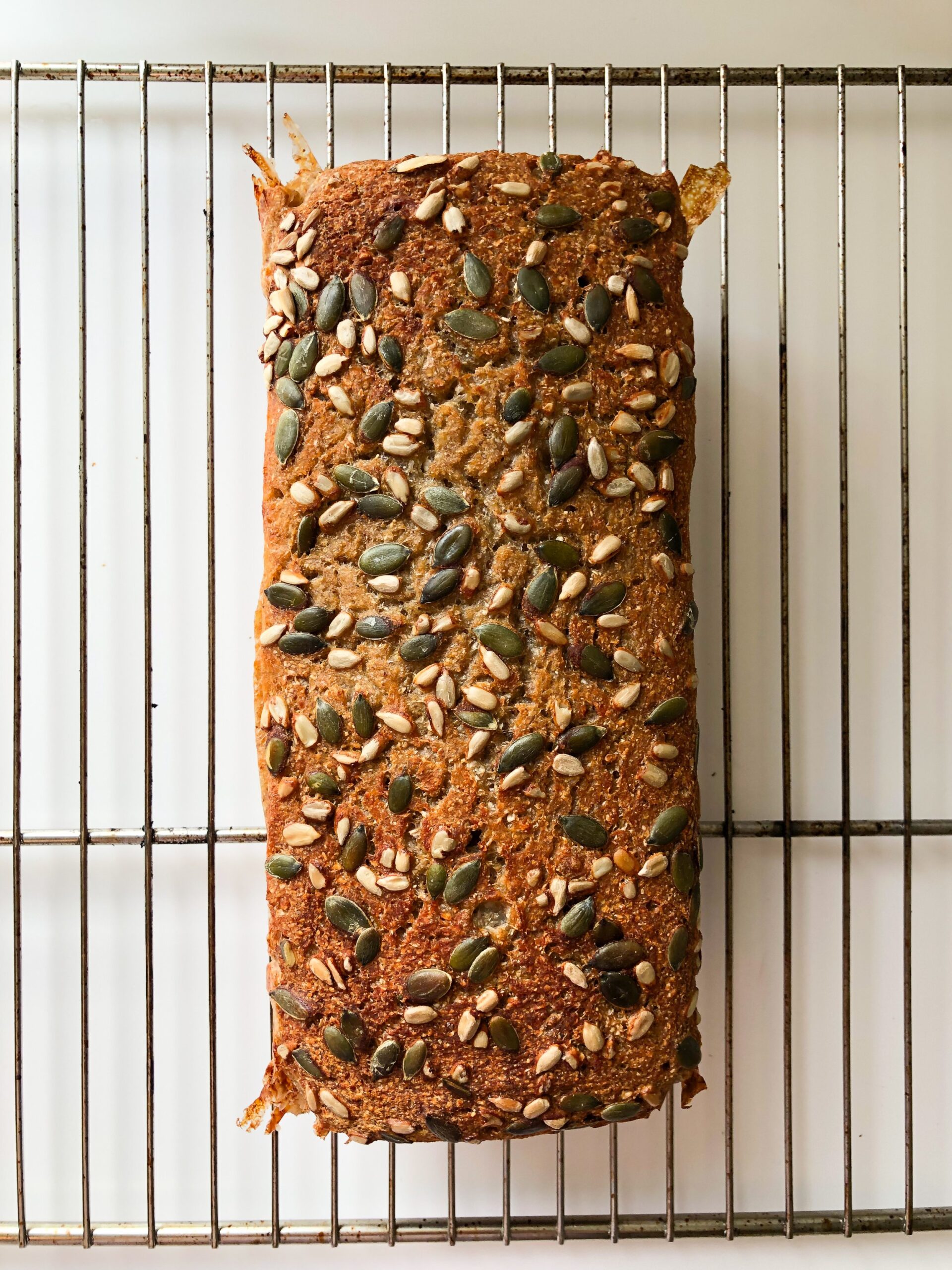
Step 7 – Bake it in the oven at 180C for 55-60 mins. Take it out of the loaf pan as soon you can and let it cool down on a wire rack. If it stays in the pan for too long the crust will get soggy.
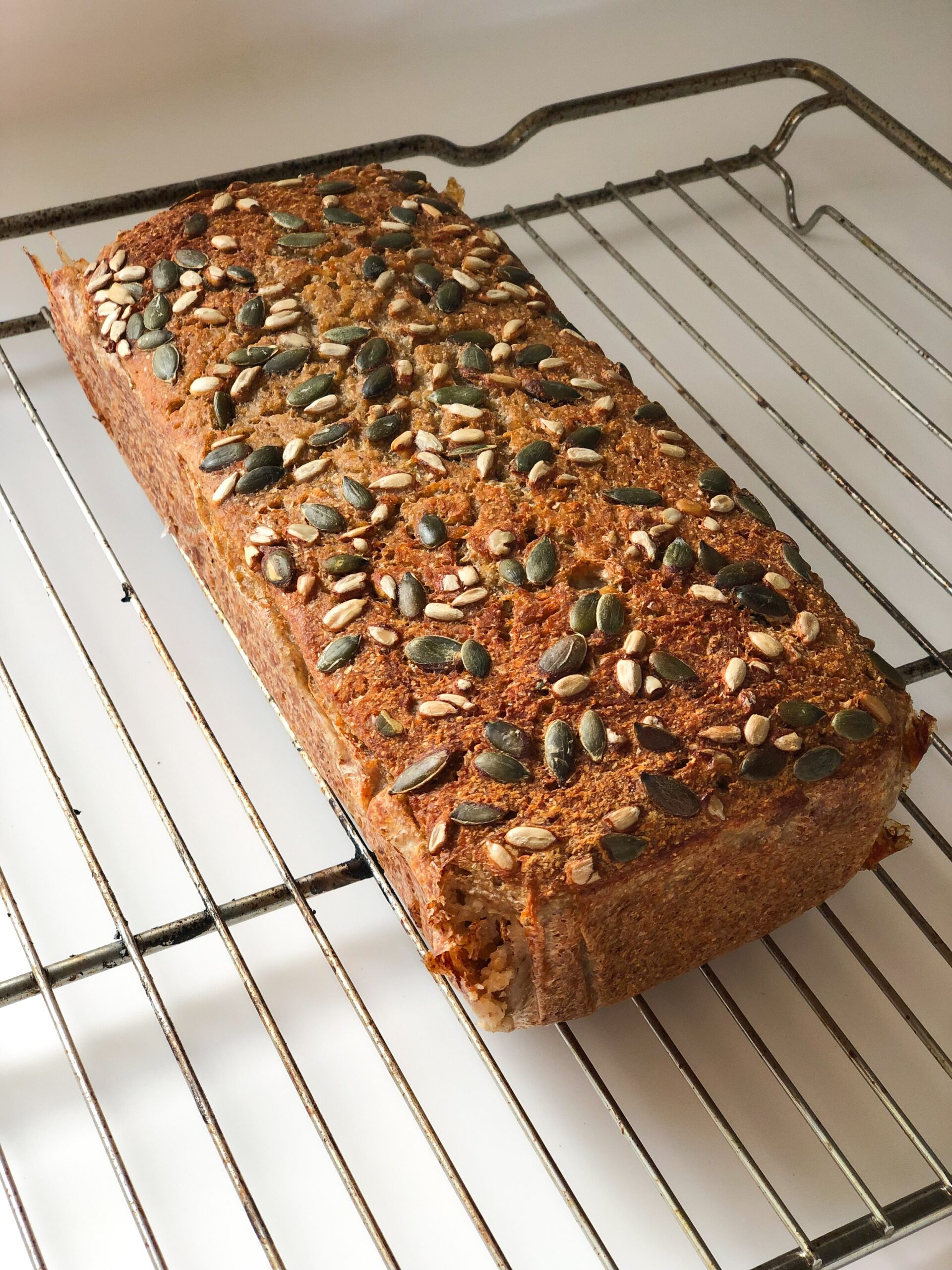
Step 8 – Let it cool down completely at room temperature. It will keep cooking and you will have a crunchier crust. Be patient, don’t be tempted to cut it open while it’s still warm. I’ve been there and believe me it’s worth the wait.
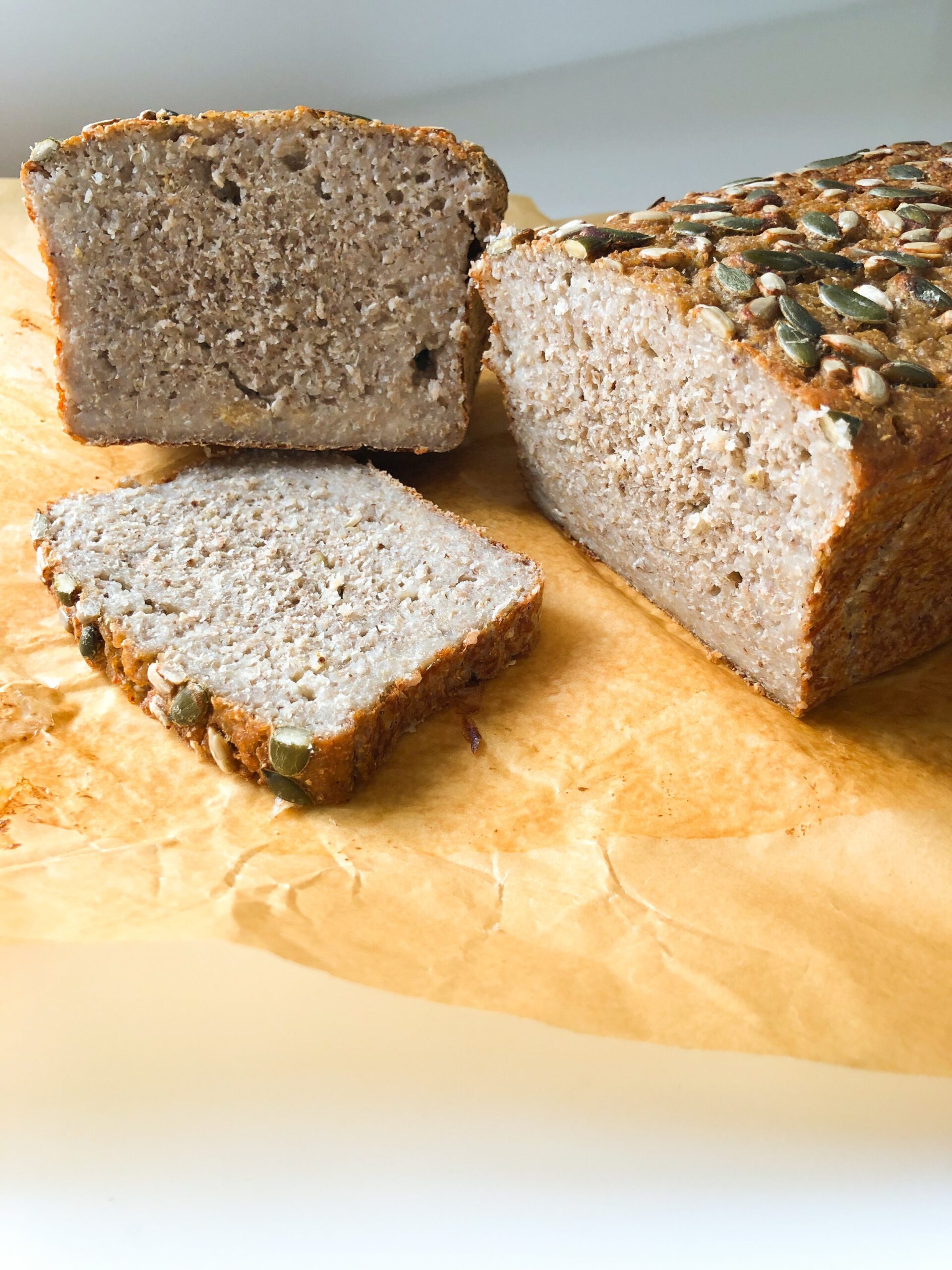
Step 9 – This is a very moist bread and is even tastier when toasted. The best way to keep it is to slice it and freeze it. Because of the moisture content it will go mouldy after 3-4 days. Freezing is the best way to keep it for long.
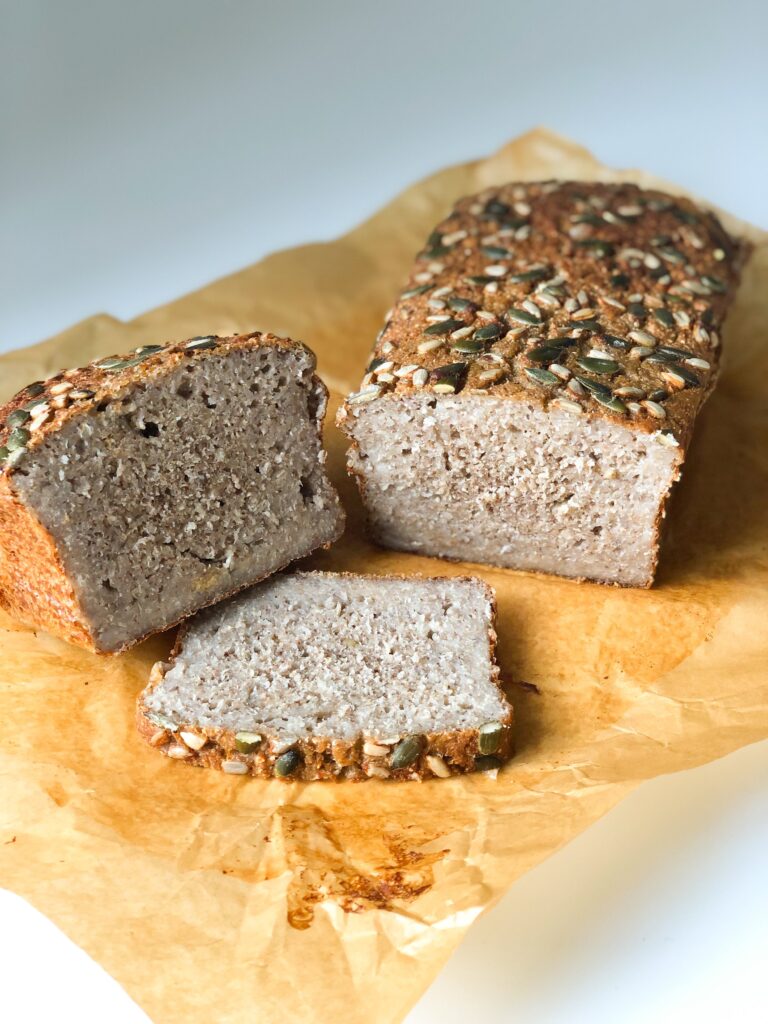
About the Ingredients
Buckwheat Groats: Use unhulled buckwheat groats raw, not toasted. Buckwheat groats contain high levels of antioxidants, which are protective against cancer, heart disease and free-radical damage. Buckwheat groats are also a source of prebiotics. This means they act as “food” for the healthy gut bacteria. Buckwheat is also high in soluble fibre, which can help lower cholesterol and reduce hypertension. Due to their high protein and fibre content, Buckwheat helps keep you feeling full for longer and won’t cause blood sugars to spike. Buckwheat is also a source of plant-based protein and is a standout because it contains all the essential amino acids. It’s also a good source of B vitamins, manganese, magnesium, zinc, copper, iron and folate.
Filtered or Mineral water: Most tap water is suitable for bread baking. However, very hard water will toughen the dough and slow fermentation while very soft water will soften the dough, making it sticky. In these cases it’s better to use bottled mineral water.
Fermentation: Eating fermented foods help restore your gut bacteria to normal. Fermented foods provide many health benefits such as anti-oxidant, anti-microbial, anti-fungal, anti-inflammatory, anti-diabetic and anti-atherosclerotic activity.
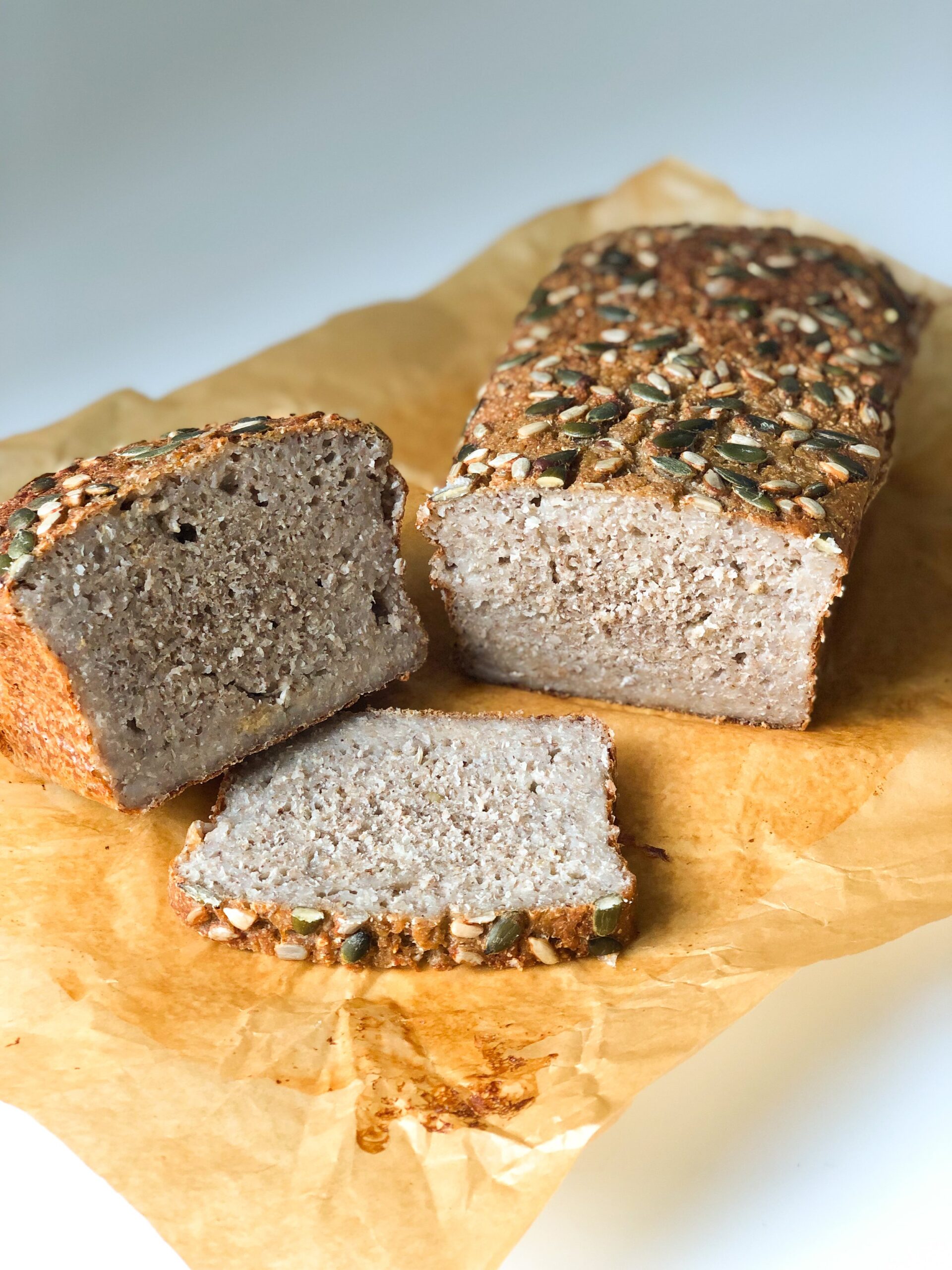
Buckwheat Bread – Gluten Free
Marisa MarquesEquipment
- 1 Loaf pan 12 x 25 cm
Ingredients
- 500 gr organic Buckwheat Groats Raw
- 500 ml filtered or mineral water
Extras optional
- 1 Tbsp Golden Linseeds
- 1 Tbsp Miso Paste
Instructions
- Start by rinsing the grouts in plenty of water until it comes out clean, normally 3 changes of water. Soak the Buckwheat Grouts overnight or 8 hours with clean filtered water at room temperature.
- Discard the soaking water, rinse and add the 500 ml of filtered or mineral water. Blend together with an immersion blender or add it to a food processor until you reach a homogenic batter. Cover the glass bowl and let it ferment for 12-24 hours at room temperature in a warm cosy place.
- You know is ready when it forms air bubbles. In the summer will ferment faster, in the winter it needs some help. Keep it next to a heater or inside the oven.
- Pre-heat the oven at 180C fan. Take 2-3 Tbsp of the batter and mix it with the miso paste in a separate bowl. Make sure it is all blended in and smooth.
- Add the ground Linseeds and the dissolved Miso Paste in to the batter folding carefully.
- Pour the batter in a loaf pan lined with parchment paper. I’m adding Pumpkin, Sunflower and Sesame seeds on top. You can add whatever seeds you like or leave it bare.
- Bake it in the oven at 180C for 55-60 mins. Take it out of the loaf pan as soon you can and let it cool down on a wire rack. If it stays in the pan for too long the crust will get soggy.
- Let it cool down completely at room temperature. It will keep cooking and you will have a crunchier crust. Be patient, don’t be tempted to cut it open while it’s still warm. I’ve been there and believe me it’s worth the wait.
- This is a very moist bread and is even tastier when toasted. The best way to keep it is to slice it and freeze it. Because of the moisture content it will go mouldy after 3-4 days. Freezing is the best way to keep it for long.
Notes
- protein pack |
- healthy bread |
- buckwheat |
- vegan |
- salt free
Did you make this recipe?
Please tag us on @fromplantswithlovekitchen
Easy gluten free recipe
Such a great fuss free bread recipe. It just needs some time but hardly and work. My favourite part is the crispy, seedy top crust, yum! It is indeed best toasted.
